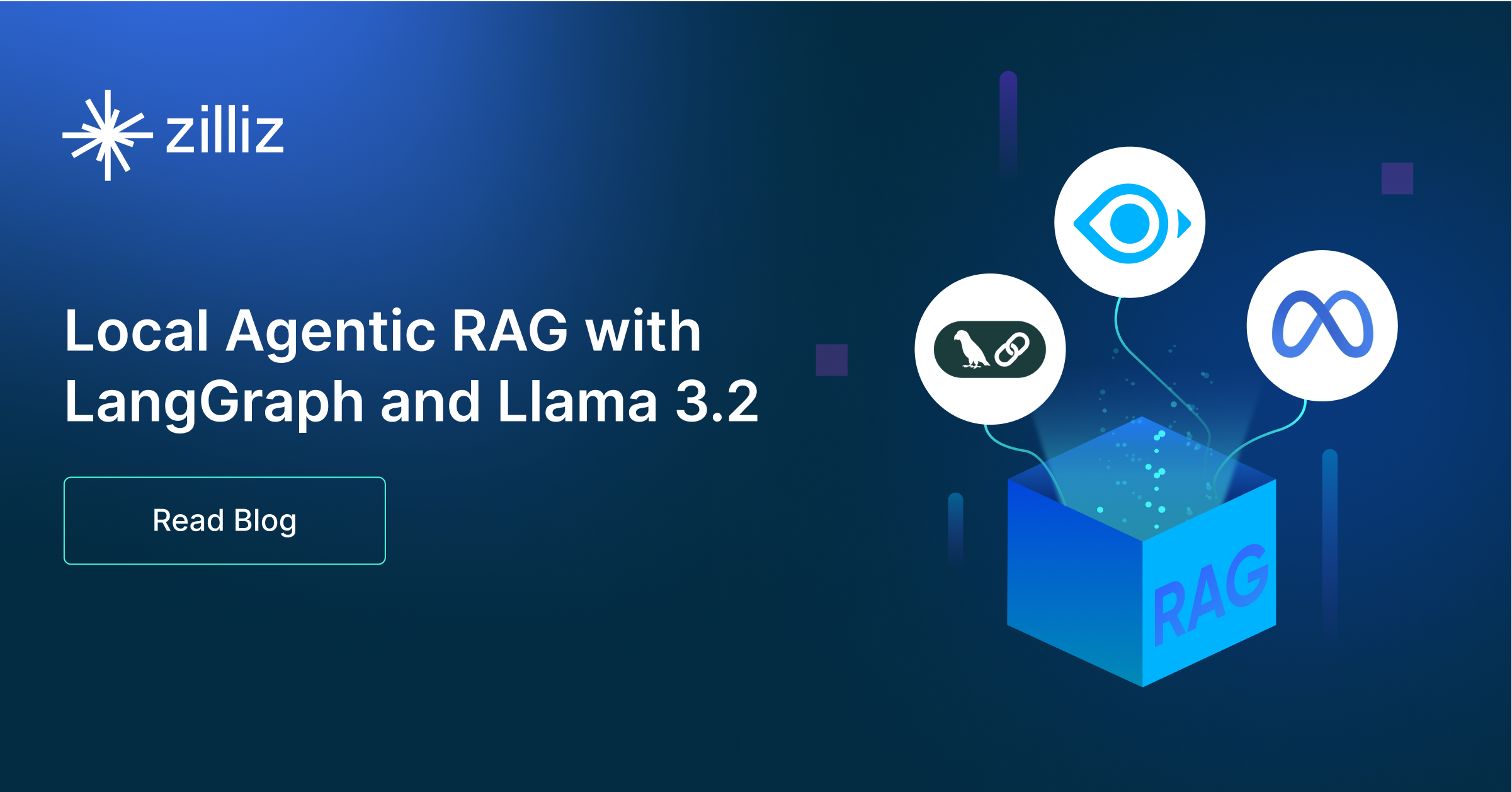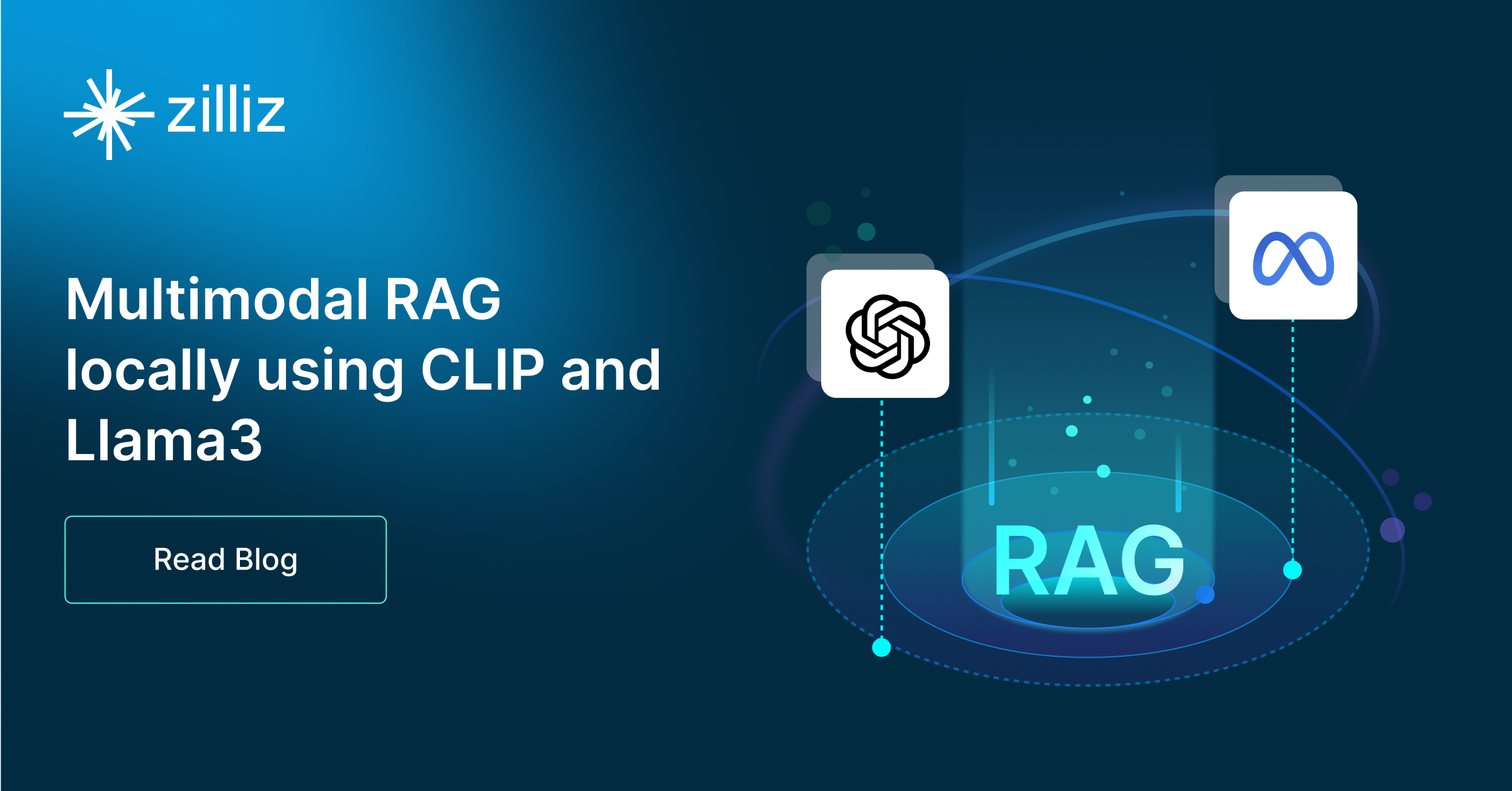Build RAG Chatbot with LangChain, LangChain vector store, Fireworks AI DeepSeek V3, and voyage-code-2
Introduction to RAG
Retrieval-Augmented Generation (RAG) is a game-changer for GenAI applications, especially in conversational AI. It combines the power of pre-trained large language models (LLMs) like OpenAI’s GPT with external knowledge sources stored in vector databases such as Milvus and Zilliz Cloud, allowing for more accurate, contextually relevant, and up-to-date response generation. A RAG pipeline usually consists of four basic components: a vector database, an embedding model, an LLM, and a framework.
Key Components We'll Use for This RAG Chatbot
This tutorial shows you how to build a simple RAG chatbot in Python using the following components:
- LangChain: An open-source framework that helps you orchestrate the interaction between LLMs, vector stores, embedding models, etc, making it easier to integrate a RAG pipeline.
- LangChain in-memory vector store: an in-memory, ephemeral vector store that stores embeddings in-memory and does an exact, linear search for the most similar embeddings. The default similarity metric is cosine similarity, but can be changed to any of the similarity metrics supported by ml-distance. It is intended for demos and does not yet support ids or deletion. (If you want a much more scalable solution for your apps or even enterprise projects, we recommend using Zilliz Cloud, which is a fully managed vector database service built on the open-source Milvusand offers a free tier supporting up to 1 million vectors.)
- Fireworks AI DeepSeek V3: This advanced AI model specializes in deep data exploration and analysis, providing powerful insights through its robust analytical capabilities. With strengths in pattern recognition and predictive analytics, it is ideal for sectors like finance and healthcare, where uncovering hidden trends and making data-driven decisions are crucial.
- Voyage Code 2: This AI model specializes in code generation and programming assistance, designed to enhance developer productivity. It offers robust support in writing, debugging, and optimizing code across various languages. Ideal for software development projects, it streamlines coding workflows and facilitates rapid prototyping and learning for both novice and experienced programmers.
By the end of this tutorial, you’ll have a functional chatbot capable of answering questions based on a custom knowledge base.
Note: Since we may use proprietary models in our tutorials, make sure you have the required API key beforehand.
Step 1: Install and Set Up LangChain
%pip install --quiet --upgrade langchain-text-splitters langchain-community langgraph
Step 2: Install and Set Up Fireworks AI DeepSeek V3
pip install -qU "langchain[fireworks]"
import getpass
import os
if not os.environ.get("FIREWORKS_API_KEY"):
os.environ["FIREWORKS_API_KEY"] = getpass.getpass("Enter API key for Fireworks AI: ")
from langchain.chat_models import init_chat_model
llm = init_chat_model("accounts/fireworks/models/deepseek-v3", model_provider="fireworks")
Step 3: Install and Set Up voyage-code-2
pip install -qU langchain-voyageai
import getpass
import os
if not os.environ.get("VOYAGE_API_KEY"):
os.environ["VOYAGE_API_KEY"] = getpass.getpass("Enter API key for Voyage AI: ")
from langchain-voyageai import VoyageAIEmbeddings
embeddings = VoyageAIEmbeddings(model="voyage-code-2")
Step 4: Install and Set Up LangChain vector store
pip install -qU langchain-core
from langchain_core.vectorstores import InMemoryVectorStore
vector_store = InMemoryVectorStore(embeddings)
Step 5: Build a RAG Chatbot
Now that you’ve set up all components, let’s start to build a simple chatbot. We’ll use the Milvus introduction doc as a private knowledge base. You can replace it with your own dataset to customize your RAG chatbot.
import bs4
from langchain import hub
from langchain_community.document_loaders import WebBaseLoader
from langchain_core.documents import Document
from langchain_text_splitters import RecursiveCharacterTextSplitter
from langgraph.graph import START, StateGraph
from typing_extensions import List, TypedDict
# Load and chunk contents of the blog
loader = WebBaseLoader(
web_paths=("https://milvus.io/docs/overview.md",),
bs_kwargs=dict(
parse_only=bs4.SoupStrainer(
class_=("doc-style doc-post-content")
)
),
)
docs = loader.load()
text_splitter = RecursiveCharacterTextSplitter(chunk_size=1000, chunk_overlap=200)
all_splits = text_splitter.split_documents(docs)
# Index chunks
_ = vector_store.add_documents(documents=all_splits)
# Define prompt for question-answering
prompt = hub.pull("rlm/rag-prompt")
# Define state for application
class State(TypedDict):
question: str
context: List[Document]
answer: str
# Define application steps
def retrieve(state: State):
retrieved_docs = vector_store.similarity_search(state["question"])
return {"context": retrieved_docs}
def generate(state: State):
docs_content = "\n\n".join(doc.page_content for doc in state["context"])
messages = prompt.invoke({"question": state["question"], "context": docs_content})
response = llm.invoke(messages)
return {"answer": response.content}
# Compile application and test
graph_builder = StateGraph(State).add_sequence([retrieve, generate])
graph_builder.add_edge(START, "retrieve")
graph = graph_builder.compile()
Test the Chatbot
Yeah! You've built your own chatbot. Let's ask the chatbot a question.
response = graph.invoke({"question": "What data types does Milvus support?"})
print(response["answer"])
Example Output
Milvus supports various data types including sparse vectors, binary vectors, JSON, and arrays. Additionally, it handles common numerical and character types, making it versatile for different data modeling needs. This allows users to manage unstructured or multi-modal data efficiently.
Optimization Tips
As you build your RAG system, optimization is key to ensuring peak performance and efficiency. While setting up the components is an essential first step, fine-tuning each one will help you create a solution that works even better and scales seamlessly. In this section, we’ll share some practical tips for optimizing all these components, giving you the edge to build smarter, faster, and more responsive RAG applications.
LangChain optimization tips
To optimize LangChain, focus on minimizing redundant operations in your workflow by structuring your chains and agents efficiently. Use caching to avoid repeated computations, speeding up your system, and experiment with modular design to ensure that components like models or databases can be easily swapped out. This will provide both flexibility and efficiency, allowing you to quickly scale your system without unnecessary delays or complications.
LangChain in-memory vector store optimization tips
LangChain in-memory vector store is just an ephemeral vector store that stores embeddings in-memory and does an exact, linear search for the most similar embeddings. It has very limited features and is only intended for demos. If you plan to build a functional or even production-level solution, we recommend using Zilliz Cloud, which is a fully managed vector database service built on the open-source Milvus and offers a free tier supporting up to 1 million vectors.)
Fireworks AI DeepSeek V3 optimization tips
DeepSeek V3 is optimized for advanced reasoning and response quality, making it a powerful choice for RAG applications requiring deep contextual understanding. Improve retrieval by implementing multi-stage ranking, ensuring only the most relevant documents are passed as context. Use structured prompts with clear delineation between retrieved content and user queries. Adjust temperature (0.1–0.2) for accuracy and fine-tune top-k/top-p for response control. Minimize latency with precomputed embeddings and caching for commonly queried data. Take advantage of Fireworks AI’s API optimizations to batch multiple requests, reducing processing overhead. Implement dynamic scaling strategies for high-demand scenarios, ensuring model performance remains consistent under load. If used in a multi-tiered architecture, deploy DeepSeek V3 for high-value queries while leveraging smaller models for basic lookups.
voyage-code-2 optimization tips
voyage-code-2 provides solid performance for code-related RAG tasks but requires careful retrieval optimization to ensure efficient and accurate results. Use structured embeddings to improve code snippet search and retrieval precision. Format prompts with clear structure, including specific instructions, function signatures, and constraints, to enhance output quality. Keep temperature low (0.1–0.2) for accuracy in deterministic tasks while allowing slight variation for exploratory coding tasks. Enable caching for frequently requested programming patterns to optimize efficiency. Use parallelized execution and request batching to handle large-scale queries effectively. In multi-model deployments, assign voyage-code-2 to standard code completion tasks while leveraging more advanced models for deeper analysis and architectural recommendations.
By implementing these tips across your components, you'll be able to enhance the performance and functionality of your RAG system, ensuring it’s optimized for both speed and accuracy. Keep testing, iterating, and refining your setup to stay ahead in the ever-evolving world of AI development.
RAG Cost Calculator: A Free Tool to Calculate Your Cost in Seconds
Estimating the cost of a Retrieval-Augmented Generation (RAG) pipeline involves analyzing expenses across vector storage, compute resources, and API usage. Key cost drivers include vector database queries, embedding generation, and LLM inference.
RAG Cost Calculator is a free tool that quickly estimates the cost of building a RAG pipeline, including chunking, embedding, vector storage/search, and LLM generation. It also helps you identify cost-saving opportunities and achieve up to 10x cost reduction on vector databases with the serverless option.
 Calculate your RAG cost
Calculate your RAG cost
What Have You Learned?
What have you learned? Wow, you’ve just taken a thrilling journey through the world of cutting-edge Retrieval-Augmented Generation (RAG) systems! By integrating a powerful framework like LangChain with the dynamic capabilities of a vector database, you’ve set the stage for creating a system that processes and retrieves information efficiently and intelligently. The vector store allows for lightning-fast searches, letting your application pull in the most relevant data with remarkable speed and precision.
But that's not all! The integration of a Large Language Model (LLM) is what truly fuels the conversational intelligence of your system, enabling it to engage users in a natural, meaningful dialogue. With the embedding model generating rich semantic representations, you're not just collecting data; you're understanding and contextualizing it. This holistic approach empowers your applications to provide nuanced responses that truly resonate with users.
We also threw in some optimization tips along the way and even a handy cost calculator, giving you the tools you need to maximize efficiency and oversee your resources smartly. Now, the possibilities for innovation are limitless! So, take a deep breath and jump into your next project. Start building, optimizing, and exploring the endless avenues of your own RAG applications! The future is bright, and it’s time for you to shine. Keep pushing boundaries—your journey has just begun!
Further Resources
🌟 In addition to this RAG tutorial, unleash your full potential with these incredible resources to level up your RAG skills.
- How to Build a Multimodal RAG | Documentation
- How to Enhance the Performance of Your RAG Pipeline
- Graph RAG with Milvus | Documentation
- How to Evaluate RAG Applications - Zilliz Learn
- Generative AI Resource Hub | Zilliz
We'd Love to Hear What You Think!
We’d love to hear your thoughts! 🌟 Leave your questions or comments below or join our vibrant Milvus Discord community to share your experiences, ask questions, or connect with thousands of AI enthusiasts. Your journey matters to us!
If you like this tutorial, show your support by giving our Milvus GitHub repo a star ⭐—it means the world to us and inspires us to keep creating! 💖
- Introduction to RAG
- Key Components We'll Use for This RAG Chatbot
- Step 1: Install and Set Up LangChain
- Step 2: Install and Set Up Fireworks AI DeepSeek V3
- Step 3: Install and Set Up voyage-code-2
- Step 4: Install and Set Up LangChain vector store
- Step 5: Build a RAG Chatbot
- Optimization Tips
- RAG Cost Calculator: A Free Tool to Calculate Your Cost in Seconds
- What Have You Learned?
- Further Resources
- We'd Love to Hear What You Think!
Content
Vector Database at Scale
Zilliz Cloud is a fully-managed vector database built for scale, perfect for your RAG apps.
Try Zilliz Cloud for Free


